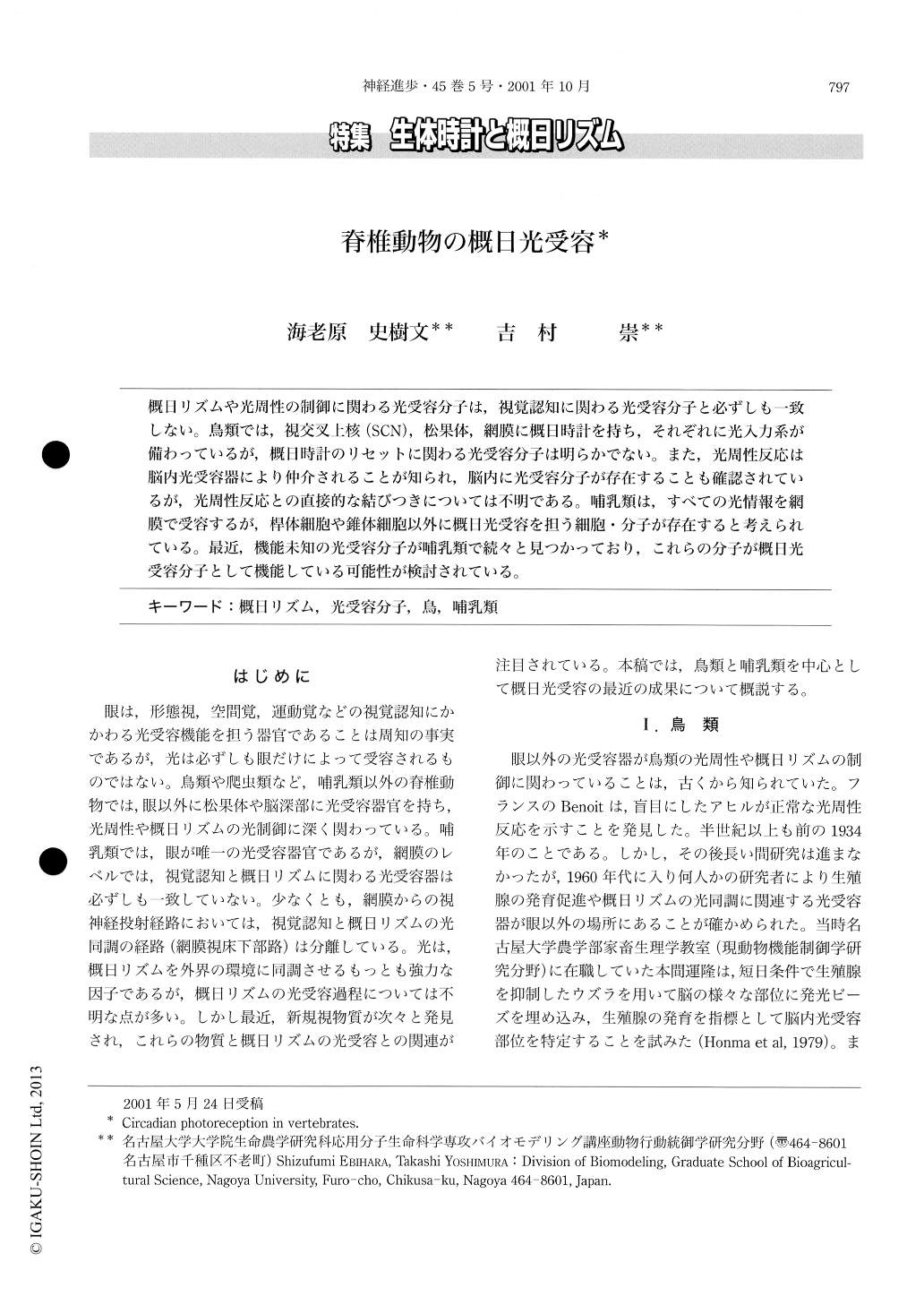Japanese
English
- 有料閲覧
- Abstract 文献概要
- 1ページ目 Look Inside
概日リズムや光周性の制御に関わる光受容分子は,視覚認知に関わる光受容分子と必ずしも一致しない。鳥類では,視交叉上核(SCN),松果体,網膜に概日時計を持ち,それぞれに光人力系が備わっているが,概日時計のリセットに関わる光受容分子は明らかでない。また,光周性反応は脳内光受容器により仲介されることが知られ,脳内に光受容分子が存在することも確認されているが,光周性反応との直接的な結びつきについては不明である。哺乳類は,すべての光情報を網膜で受容するが,桿体細胞や錐体細胞以外に概日光受容を担う細胞・分子が存在すると考えられている。最近,機能未知の光受容分子が哺乳類で続々と見つかっており,これらの分子が概日光受容分子として機能している可能性が検討されている。
In birds, circadian oscillators reside in the suprachiasmatic nucleus, the pineal gland and the retina. Each oscillator responds to light but photopigments which are implicated in resetting of circadian clock have not yet been identified. Although it is known that a photopigment is located in deep brain, no direct evidence showing the relationship between the photopigment and photoperiodic response are available. In mammals, all light information is received by the retina. However, photoreceptors other than the rod and cone are thought to be involved in circadian photoreception. Recently discovered novel photoreceptive molecules are studied as the candidate for the circadian photopigment.

Copyright © 2001, Igaku-Shoin Ltd. All rights reserved.


